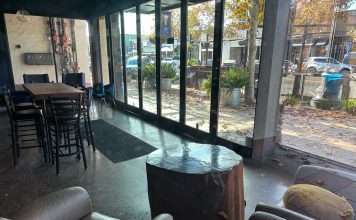Gilroy
– On a dark road with no streetlights or traffic on the east
side of the city, Tina Meyer saw the flashing lights of a police
car in her rearview mirror.
By Lori Stuenkel
Gilroy – On a dark road with no streetlights or traffic on the east side of the city, Tina Meyer saw the flashing lights of a police car in her rearview mirror.
She knew she was obliged to stop and turned on her blinker, but instead of stopping immediately the 55-year-old pointed her left arm outside the car to indicate she would soon pull to the side of the road and slowly drove a half-mile through the secluded area between two major shopping centers east of U.S. 101 until she reached a place where she knew there would be people.
Meyer was being followed by a marked Gilroy police car, but said the 1986 murder of a San Diego woman by a highway patrolman and stories of others impersonating police officers, made her wary of stopping where there were few lights or people.
Failing to yield to or stop for an officer with red lights and sirens is a violation of state law. Police say there are some guidelines for pulling over when unsure about an unmarked car – such as calling police dispatchers or checking an officer’s identification – that can keep both drivers and officers safe.
Meyer said she didn’t see the car behind her until she pulled through the intersection of Sixth Street and Rogers Lane and started across the U.S. 101 overpass. On the other side of the freeway, the road is surrounded by fields and few streetlights until a car turns down Camino Arroyo, which was where Meyer was headed.
“The first thing I thought was, I’ve always told my daughters, ‘Don’t stop in the dark…'” she said. “I figured I’m going to get to Wal-Mart because I know people are getting to work at that hour and there would be people in the parking lot and I felt safe there.”
She received a ticket for failing to stop at the Rogers Lane intersection, but was not ticketed for failing to yield when she explained her reasons to the officer. She easily could have been, although police said Wednesday they recognize that drivers may want to use caution in similar circumstances.
“I certainly would understand someone being scared” if being stopped by an unmarked car, Sheriff’s Lt. Dale Unger said. “But look at the officer’s point of view: Why isn’t this person stopping? All of a sudden, this whole thing is being escalated because the officer is thinking in the back of his mind, maybe there’s something going on here.”
Sheriff’s deputies often must pull over drivers in rural areas and Unger himself makes stops in an unmarked car. Even unmarked cars will have a red light and a siren, he said.
Gilroy police also may make stops in unmarked cars, said Detective Rosa Quiñones. That task is generally left to marked cars, but an officer in an unmarked car will stop suspects or other dangerous vehicles as needed.
“When we’re going to do a traffic stop, we want to be safe ourselves,” Quiñones said. “So we try to do it in an area that’s well-lit and there’s other people around.
“But if we’re in an area where there’s no businesses nearby, no homes, anything, and … for no reason (a car) is weaving on the roadway or it’s reported as a possible burglary suspect, then we’re going to stop it when we see it.”
She noted that police vehicles with lights and sirens often are simply trying to get around cars on the road to get to an emergency.
Drivers who want to verify that an officer is indeed pulling them over may call police dispatchers on the non-emergency line, Quiñones said, but dispatchers might not be immediately aware of a traffic stop by plainclothes detectives.
Unger suggested that drivers who are worried about being pulled over in a rural area call 911 to verify the stop. They can also request to see an officer’s identification.
“There are people that have falsely identified themselves as police officers,” Unger said.
Most recently, two men posing as police in San Jose pulled victims over using a white spotlight and public address system last month to rob them.
Drivers may look for a more public and well-lit place if they are scared, but Unger warned against driving more than a short distance or breaking any rules of the road.
“I would certainly explain (to the officer) what was going through your head and I think most officers are understanding of that,” he said.
Officers will use their discretion and take further steps, such as sounding a siren, if a driver is not pulling over quickly enough. If an unmarked car pulls someone over, Unger said, a marked car will also be dispatched.
Unger recently pulled a man over while driving his unmarked car and wearing a uniform, badge and radio. The man still asked to see his I.D.
“I don’t think it was unreasonable for somebody to ask that and it was nothing for me to show him an I.D. card,” he said.













